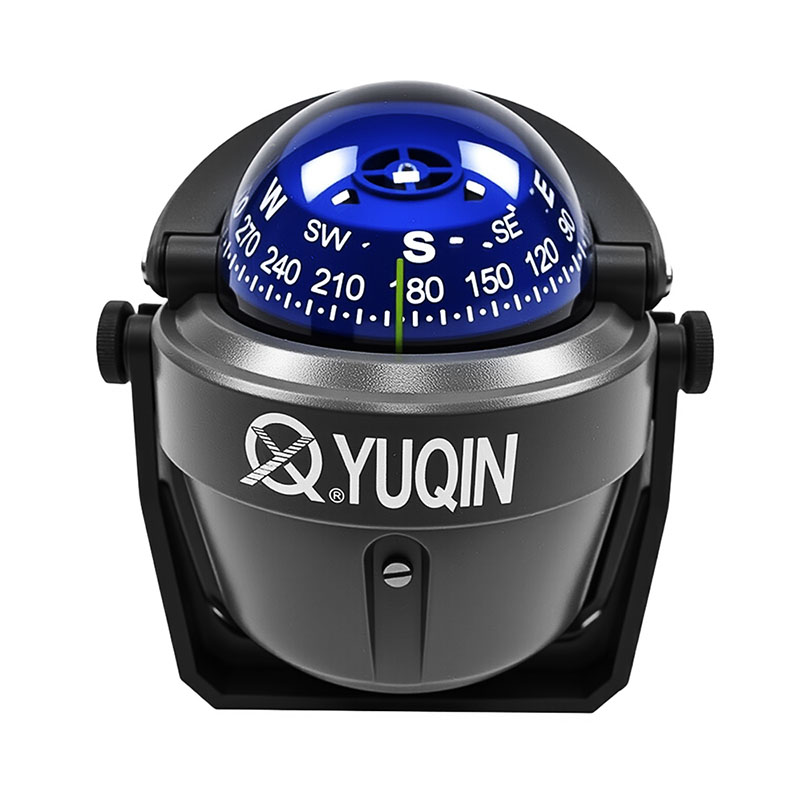The Essential Guide to Marine Magnetic Compasses: Principles, Usage, and Care
The Unwavering Pointer in Navigation
For centuries, the marine magnetic compass has been a primary instrument guiding mariners. Even today, it remains a vital, power-independent tool on all vessels. The boat compass is indispensable for steering, course verification, and emergency navigation. Understanding its principles and correct usage is crucial for good seamanship. This guide explores the magnetic compass for ships, its mechanism, uses, operation, and essential care.
How Does a Marine Magnetic Compass Work?
The working principle of a marine magnetic compass relies on aligning with the Earth's magnetic field. Key components include:
- Earth's Magnetic Field: The Earth acts as a giant magnet, creating magnetic field lines that the compass detects. Magnetic North differs from True (geographic) North.
- Magnetic Needles/Card: Magnetized needles are attached to a lightweight compass card marked with 360 degrees and cardinal points. This assembly aligns with the Earth's magnetic field.
- Pivot and Jewel: The card is balanced on a low-friction pivot and jewel, allowing free rotation.
- Compass Bowl & Damping Fluid: The assembly is housed in a sealed, non-magnetic bowl filled with liquid (alcohol/water or oil). This fluid damps card oscillation, reduces friction, and lubricates the pivot.
- Lubber Line: A fixed vertical line on the compass bowl, aligned with the ship's keel. The card reading under the lubber line is the ship's magnetic heading.
- Binnacle (Larger Vessels): A protective stand that may house correctors (magnets, soft iron) to counteract the ship's magnetism.
As the ship turns, the card attempts to remain pointed towards Magnetic North, and the lubber line moves around it, indicating the current heading.
Applications of Magnetic Compasses on Vessels
The marine magnetic compass is versatile:
- Primary Navigation: Often the main directional instrument on smaller boats.
- Steering: Used by helmsmen to maintain a desired course.
- Course Verification: Essential for cross-checking gyrocompasses and GPS systems.
- Emergency Navigation: Vital if electronic systems fail due to power loss. Often mandated by SOLAS.
- Taking Bearings: With an azimuth circle, used for position fixing and collision avoidance.
- Lifeboat/Liferaft Navigation: Standard equipment for survival craft.
Using Your Marine Magnetic Compass Effectively: Reading and Corrections
Accurate use requires understanding readings and errors:
- Reading the Heading: The value on the compass card aligned with the lubber line is the ship's magnetic heading.
- Magnetic Variation (Declination):
- The angle between True North and Magnetic North at a location.
- Found on nautical charts; changes with location and time.
- Named East (E) or West (W).
- Compass Deviation:
- Error caused by the ship's own magnetic field (hull, engine, electronics).
- Changes with ship's heading and can be affected by cargo or latitude.
- Named East (E) or West (W).
- Correcting Compass Courses (Compass to True): Use mnemonics like "Can Dead Men Vote Twice At Elections?" (Compass, Deviation, Magnetic, Variation, True, Add East).
- Compass Heading ± Deviation = Magnetic Heading
- Magnetic Heading ± Variation = True Heading
- Rule: For E errors, add; for W errors, subtract when going from Compass to True. (Reverse for True to Compass: "True Virgins Make Dull Companions At Weddings" - Add West errors).
- Swinging the Compass & Deviation Card:
- Swinging the compass involves turning the ship to observe deviations on different headings.
- These deviations are recorded on a deviation card kept near the compass for quick reference.
- Taking Bearings: A compass bearing of an object must be corrected for deviation and variation to get a true bearing for chart work.
Crucial Considerations for Your Ship's Magnetic Compass
Maintain reliability with these considerations:
- Installation:
- Place far from iron, steel, and electrical equipment.
- Position on the ship's centerline if possible, easily viewable by the helmsman.
- Deviation and Compensation:
- Significant deviation can make a compass unreliable.
- Certified compass adjusters can "compensate" or "correct" the compass using magnets and soft iron to minimize deviation. This should be checked regularly.
- Ship's Magnetism:
- Hard iron (permanent magnetism) and soft iron (induced magnetism) on the ship cause deviation.
- Maintenance and Care:
- Keep clean; check fluid for level and bubbles. Ensure free card rotation.
- Keep magnetic items (tools, phones, speakers) at least 1 meter (3 feet) away.
- Other Errors:
- Heeling Error: Caused by the ship leaning, especially on sailing vessels.
- Parallax Error: Occurs if reading the compass from an angle instead of directly in front.
- Lighting: Ensure appropriate non-magnetic (usually red) lighting for night use.
Featured Small Craft Magnetic Compass: YUQIN YQ-50

For smaller vessels, a reliable compass like the YUQIN YQ-50 is essential. It offers clear readability and robust construction for the marine environment, providing an accurate magnetic heading.
Explore more about the YUQIN YQ-50 small craft magnetic compass here: YUQIN YQ-50 Product Page
Conclusion: Trusting the Timeless Navigator
The marine magnetic compass remains a vital, power-independent navigation tool. Understanding its principles, usage, error correction (variation and deviation), and proper care ensures this boat compass or ship's magnetic compass serves faithfully. It’s a cornerstone of safe navigation at sea.

